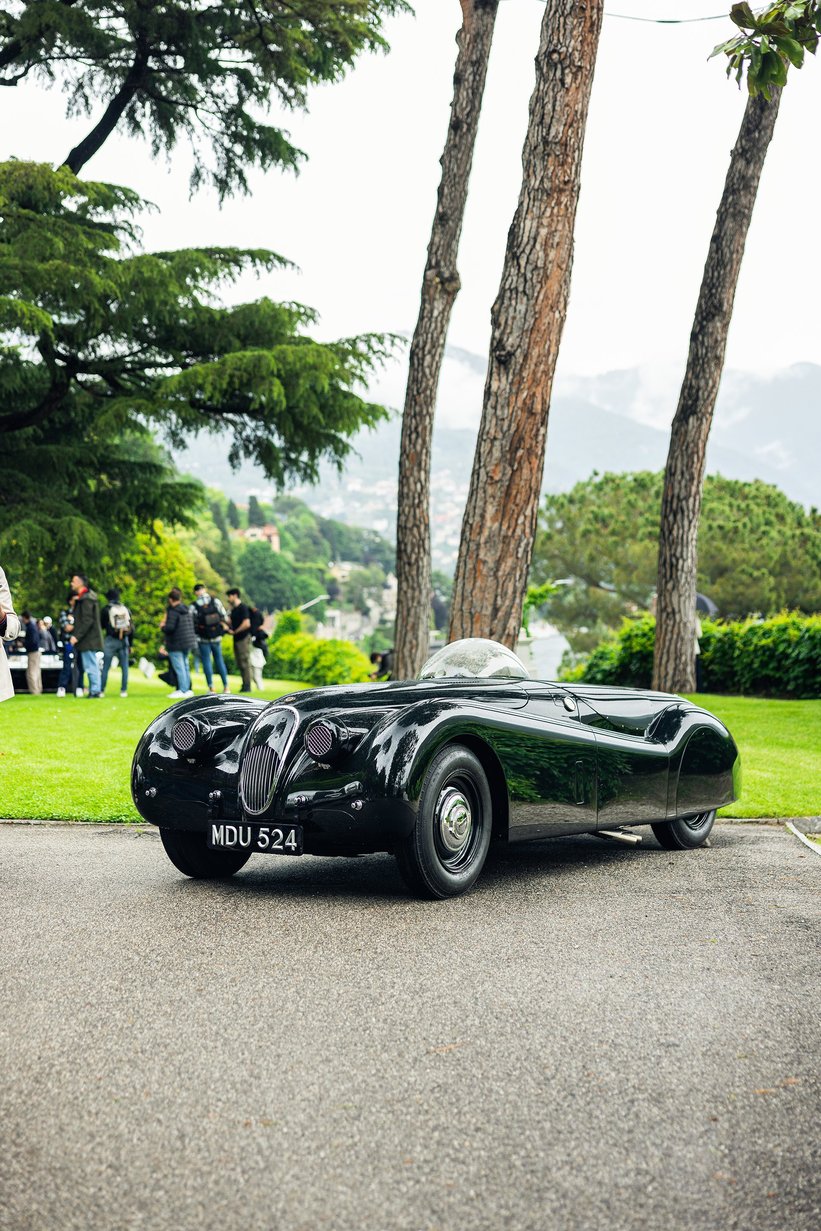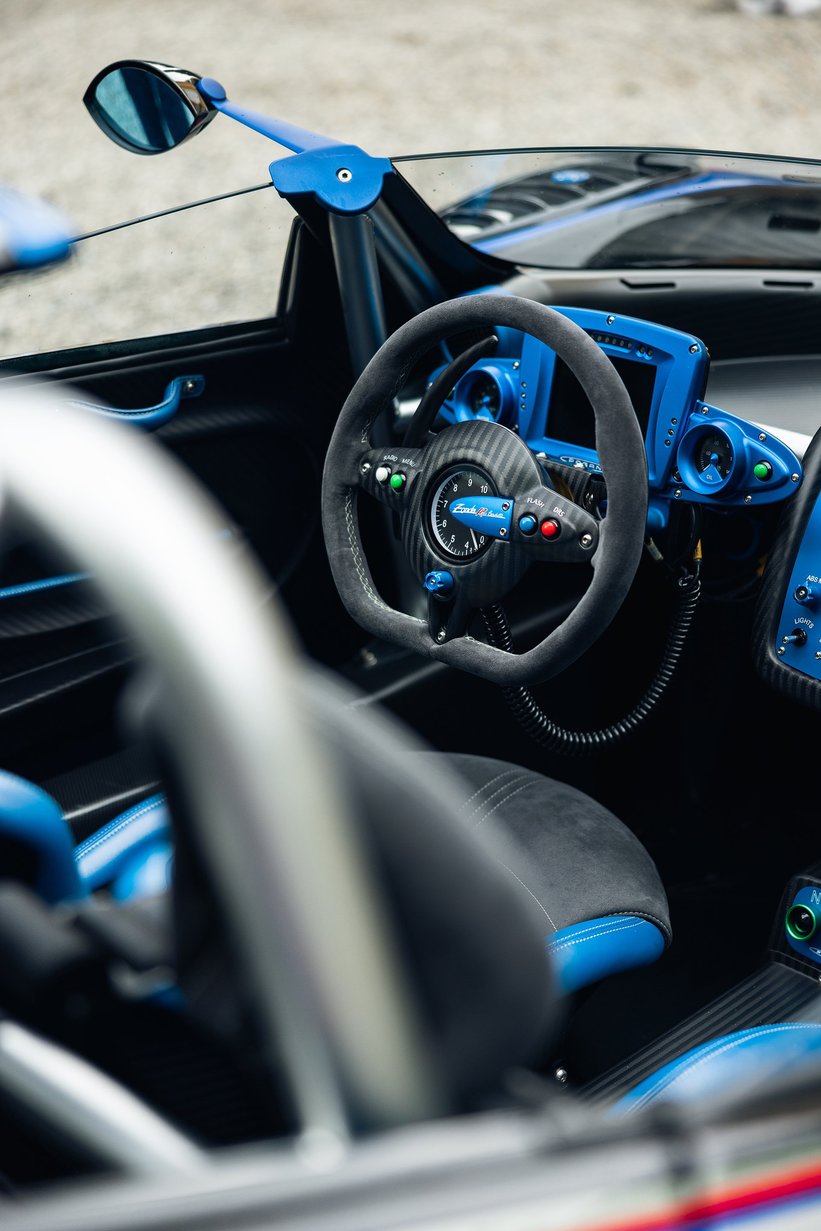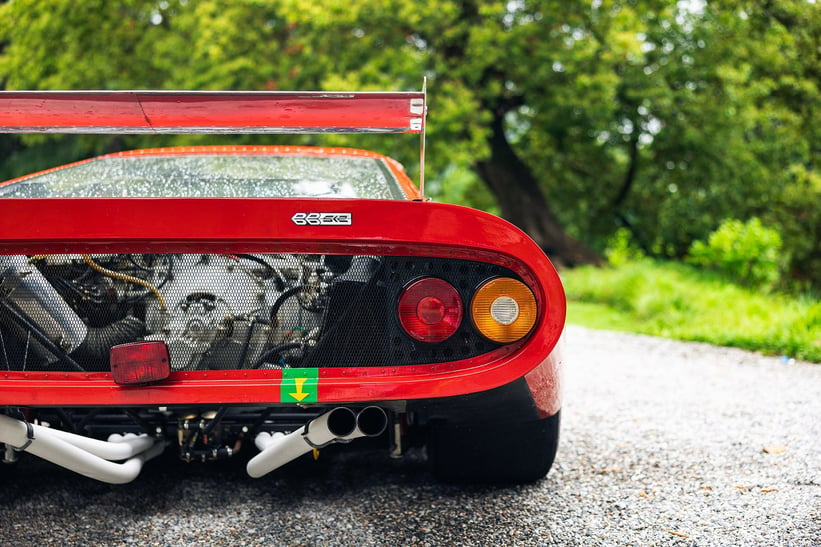




Last weekend, FuoriConcorso Aero paid homage to the most beautiful cars shaped by the wind in a landmark exhibition and event. Classic Driver has had the pleasure to support FuoriConcorso founder Guglielmo Miani and his team as the official media partner since the first event in 2019 dedicated to the 'Big Bentleys” of the 1990s – and after last year’s benchmark exhibition of customized Porsches at FuoriConcorso Sonderwunsch, this year’s event outclasses the previous editions with its diversity. In fact, the team around the event’s main curator Andrea Luzardi had managed to assemble more than 30 cars that wrote aerodynamics history. So while the Porsche Museum displayed some of their greatest road and racing cars at FuoriConcorso Open Museum right across the street at Villa Olmo, it was all about aerodynamics in the luxurious gardens of Villa del Grumello and Villa Sucota overlooking Lake Como.


Walking the open-air exhibition chronologically, as cars grew flatter and spoilers wider, offered the opportunity for a time-lapse trip through the evolution of car design. The earliest automobile on display was a Diatto 20S aptly nicknamed ‘Torpedo’ featured a boat-tail rear end, angled, split screens and canted cycle wings designed to cut through the air. From the late 1930s come two poster cars of aerodynamic movement: The BMW 328 Kamm Coupé was named after the German aerodynamics pioneer Wunibald Kamm and featured an impressive aluminium body streamlined by Carrozzeria Touring for the 1940 Mille Miglia. After the car disappeared in the 1950s, it was recreated by BMW in 2010 and presented at Concorso d’Eleganza Villa d’Este.



The second remarkable car from that era is the Mercedes-Benz 540 K Stromlinienwagen. Designed as a high-speed highway cruiser and powered by a 5.4 litre straight-eight producing 180 horsepower, the Mercedes could travel at speeds of up to 115 mph. The car was rebuilt in years ago by Mercedes-Benz.


After the war, manufacturers kept experimenting with streamlined shapes for their automobiles. Jaguar received high recognition with its modified XK120s that broke speed records in the famous Jabbeke speed trials with a cockpit glass roof that resembled a diving bell while Carlo Abarth took things to the next level with a series of soap-bar-shaped prototypes: Powered by lightweight 2-clyinder engines and styled by Pinin Farina, they broke countless speed records at the end of the 1950s. Resembling a slim silver shark circling its prey, the Abarth 1000 Record car was certainly one of the most remarkable automobiles of this year’s FuoriConcorso. Equally exciting was the sight of the wild, gas-turbine powered 1954 Fiat Turbina experimental prototype with its aeronautically inspired silhouette and wings.


If we would have had to pick one car from the FuoriConcorso Aero line-up for a drive around the lake, it would have been the Alfa Romeo Giulia TZ designed by the great Ercole Spada for Zagato. For us, the sleek coupe with its distinct coda tronca ranks among the greatest sports cars of all times. Meanwhile, the award for the most futuristic car would have to go to the 1970 Pontiac One Concept with its sharpened front end, covered rear wheels that was created by none other than Harry Bradley, designer of the Wienermobile (potentially the least aerodynamic car in recent automotive history).


Since the days when Ettore Bugatti sent his streamlined ‘Tanks’ to the racetrack in order to increase lap times by a few seconds, motor racing has been one of the main accelerators of aerodynamic design and engineering. FuoriConcorso Aero had several fascinating track toys on display, including a Lancia LC2 Group C racer in the iconic Martini livery – certainly one of the great endurance legends of the 1980s. Equally mythical was the Nissan R390 that the Fuoriconcorso team had managed to get hold of. The Nismo-designed car competed against Porsche’s GT1s in the late 1990s and is considered to be a masterpiece of engineering and aerodynamics. If you are into unusual Japanese supercars, the rarer-than-rare Honda NSX-R might have also quickened your pulse.



While the focus at Concorso d’Eleganza Villa d’Este is mainly on the classic cars, FuoriConcorso has always put an emphasis on contemporary car culture – and the Aero edition is no exception. The line-up of new-millennium supercars included a Bugatti Veyron SS as well as a Maserati MC12 Corsa, the ultra-functional and mindbendingly quick Ferrari FXX K Evo (sporting what could be considered as the wildest aero kit in recent car history) painted in a very elegant pale blue metallic.


It was also no surprise that supercar pioneer Horacio Pagani chose FuoriConcorso to celebrate the 25th anniversary of his ultra-exclusive boutique manufacture. The Zonda Revo Barchetta he brought along must have been one of the most-photographs of the whole Como Car Week. Funnily, the most aerodynamic car in the exhibition was no space-and-time-bending hypercar, but the modest Volkswagen XL1. The lightweight, one-litre car stunned the world with a cw value of 0.186 when it was unveiled ten years ago.


At Villa Sucota, the FuoriConcorso Aero line-up included many of the most remarkable unicorns of our time – a breathtakingly low Aston Martin Valkyrie with orange details, a flame-orange McLaren Speedtail, the Koenigsegg Jesko and the all-electric Pininfarina Battista – but also more obscure cars like the Aspark Owl and the Dallara Stradale EXP. Classic Driver’s very own CEO J.P. Rathgen rushed over from his jury duties at Concorso d’Eleganza Villa d’Este on Saturday afternoon to host a very insightful panel discussion with Horacio Pagani, Christian von Koenigsegg, aerodynamic specialist Dr. Ralf Häßler of Porsche, Dallara engineer Dialma Zinelli, CEO of Pininfarina Paolo Dellachà, and Alex Gibson of McLaren.



And while the weather could have been slightly friendlier, the FuoriConcorso crowds did not let a bit of rain spoil their automotive garden party. Especially, as the jungle-like park of Villa del Grumello bore even more secrets and surprises: Following a narrow trail up the hill, guests reached the St Moritz pavilion where they were surrounded by a group of five fantastic Berlinetta Boxer Ferraris – two 365 GT4 BBs, one painted in the eclectic shade of Verde Germoglio and one light red that once belonged to Niki Lauda, as well as a yellow 512 BB, a silver 512 BBi from the Agnelli family and two bind-bending competition cars, a yellow 512 BB Competizione and the even more dramatic 512 BB LM. FuoriConcorso had brought the BB cars together for the 50th anniversary of the Ferrari BB and the launch of their new book “Berlinetta Boxer Legends” which we will properly introduce to you soon.


Inside the St. Moritz pavilion, guests were able to refuel with a coffee or proof their driving talent on one of the highly authentic motorsports simulators coachbuilt by Pininfarina and Zagato for the TCCT's new digital platform Roarington. After the speeding up Bernina Pass in a virtual Porsche 930, it was time to have a final glance at the racing machines in front of Villa del Grumello while Italo Disco legend Pino d’Angiò stepped on the veranda for a surprise performance of his hit song “Ma Quale Idea” and the Milanese it crowd started to dance in the rain. Only at FuoriConcorso!
Photos: Tom Shaxson for Classic Driver









































































